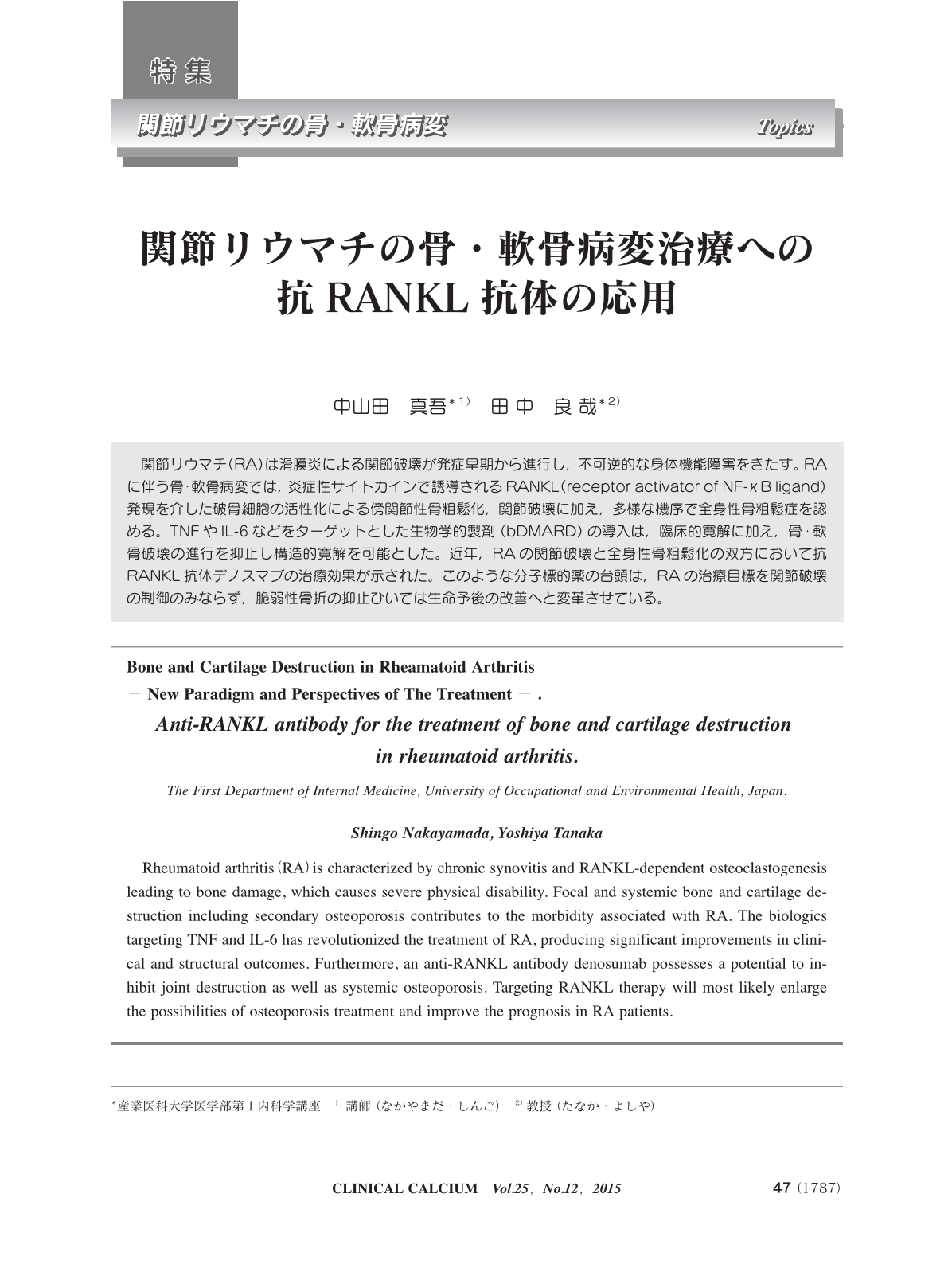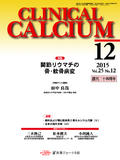Japanese
English
- 有料閲覧
- Abstract 文献概要
- 1ページ目 Look Inside
- 参考文献 Reference
関節リウマチ(RA)は滑膜炎による関節破壊が発症早期から進行し,不可逆的な身体機能障害をきたす。RAに伴う骨・軟骨病変では,炎症性サイトカインで誘導されるRANKL(receptor activator of NF-κB ligand)発現を介した破骨細胞の活性化による傍関節性骨粗鬆化,関節破壊に加え,多様な機序で全身性骨粗鬆症を認める。TNFやIL-6などをターゲットとした生物学的製剤(bDMARD)の導入は,臨床的寛解に加え,骨・軟骨破壊の進行を抑止し構造的寛解を可能とした。近年,RAの関節破壊と全身性骨粗鬆化の双方において抗RANKL抗体デノスマブの治療効果が示された。このような分子標的薬の台頭は,RAの治療目標を関節破壊の制御のみならず,脆弱性骨折の抑止ひいては生命予後の改善へと変革させている。
Rheumatoid arthritis(RA)is characterized by chronic synovitis and RANKL-dependent osteoclastogenesis leading to bone damage, which causes severe physical disability. Focal and systemic bone and cartilage destruction including secondary osteoporosis contributes to the morbidity associated with RA. The biologics targeting TNF and IL-6 has revolutionized the treatment of RA, producing significant improvements in clinical and structural outcomes. Furthermore, an anti-RANKL antibody denosumab possesses a potential to inhibit joint destruction as well as systemic osteoporosis. Targeting RANKL therapy will most likely enlarge the possibilities of osteoporosis treatment and improve the prognosis in RA patients.



